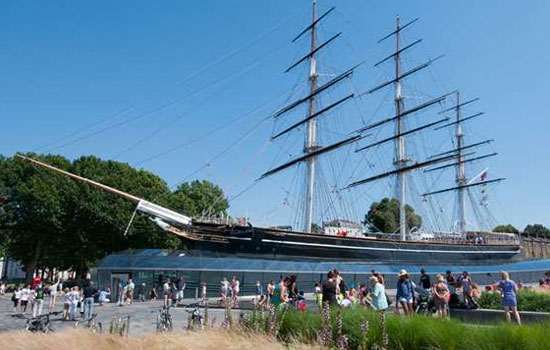The donkey wheel operator
Hannah Brewer, Carisbrooke Castle, Isle of Wight
There are six donkeys at Carisbrooke Castle, with three (Jack, Juno and Jigsaw) taking it in turns to work the wheel for 30-second shifts six times a day. Historically, the wheel would have drawn water up from the well. But to reach the bottom it must turn 17 times and, when the bucket is full, it weighs over a hundred kilograms. Our donkeys turn the wheel twice each and bring up an empty bucket.
The question we are asked most often is, ‘Is it OK to make the donkeys work the wheel?’ As stable manager, the welfare of the donkeys is my priority. Technically, they fall under the Performing Animals Act, and we adhere strictly to the clauses in our licence. The staff and volunteers ensure they are fed the correct diet, are in the correct environment and have good mental and physical stimulation.
Donkeys get bored easily as they are so intelligent. We never force them into the wheel. If they step in willingly, we know they are happy to do it. If they are hesitant, a member of staff does it instead! On a typical day, two donkeys are brought up from the field to be groomed and hoof-picked in front of the public. They do three demonstrations on the wheel then spend the afternoon on the grass as another takes over.
Meet the Carisbrooke donkeysThe boatman
Mick Shipley, Warkworth Castle and Hermitage, Northumberland
On a summer’s day, this job is superb. Passengers often say how lovely and quiet it is out on the river. There is no traffic noise – it’s really peaceful. I often row into the middle of the river, then stop and drift. It’s totally silent. I have seen kingfishers and grey seals that have swum up from the sea.
Visitors walk about half a mile down from the castle to the river, then I row them over to the other side to the Hermitage. Sometimes I accompany them to the Hermitage to tell them about it. At other times, I go straight back to pick up the next lot of passengers – it depends how busy it is. The Hermitage is a chapel that was carved six metres up into a rock face in the 1300s. The stonemasons who created it must have been very skilful.
On a busy day I can ferry 300 people and make about 80–90 trips. You can only reach the Hermitage by boat, so it’s a popular thing to do. The boat is about 50 years old and is clinker-built. It is big, broad and solid but can fill up with rainwater like a giant bath, meaning I have to bail it out.
My favourite time of year is September, when the trees that line the banks start to change colour. You become very aware of the seasons in a job like this. I have been the boatman here for seven years and it is never boring – I love it.
Things to see and do at Warkworth CastleThe pest controller
Dee Lauder, national
My official title is collections pest control manager – I oversee the Integrated Pest Management Programme at 72 English Heritage properties containing vulnerable collections. This involves training collections conservation staff to identify insect pest species, recording insect pest trap data, detecting potential infestations, and advising procedures for eradicating them.
Woodworm is caused by damp, for example, and can be treated in a heat chamber that penetrates deep inside the wood and kills larvae. One of the difficulties comes from the textiles at our properties, which are dyed red using cochineal, made from crushed insect bodies. Larvae can feed on the carmine, causing damage.
I ensure my colleagues carry out regular checks and deep cleans of our collections and the properties. This identifies problems at an early stage, which is essential. Once you lose a collection, you can’t get it back.
It’s a great job – every site is different and things constantly change, from new legislation practices to new insect pest species. When I retire, I hope my legacy will be that I oversaw a blooming good job looking after all those collections.
Buy our book 'Pests In Houses Great & Small'The stables manager
Shelly Lovick, Audley End House and Gardens, Essex
We have a daily timetable for the horses, starting with a morning feed in the field at 8am, followed by grooming and meeting the public up by the stables. The horses are all different breeds: Nash is an ex-racehorse, Tilly and Monty were showjumpers, and little Milo is a Welsh pony who pulls the governess cart, as he is too small to ride.
The horses take it in turns to do three displays each day. These are often centred around the events we are involved in. Because we work with birds of prey, for example, we fly a kite above the horses to get them used to it, or ring bells that sound like those on the birds’ jesses. We also do a spoken display dressed as either a Victorian groom or lady’s maid. Riding side-saddle is not as easy as it looks. I fell off in front of 2,000 people at a display last year! But when I dress up in full Victorian gear and ride around the grounds, I lose myself. It’s as though I’ve travelled back 150 years.
The horses are like our children, really. We spend every day with them and get to know their quirks. It’s nice seeing the public take an interest in them, especially children who are wary of them at the start. At the end of a display, they come up and stroke them rather than stand back two feet. It’s fantastic.
Meet the horses at Audley EndThe steam engine operator
Tracy Shaw, Stott Park Bobbin Mill, Cumbria
The steam engine replaced the water mill at Stott Park in 1880. It generated twice the power and enabled a quarter of a million bobbins a week to be made here from the 1880s until the 1900s. The demand from the Lancashire textile industry was incredible.
Originally, the engine powered everything but now it just powers the line shaft – we make a few bobbins for demonstration purposes.
I come in early to light the boiler. It takes about two hours to get to a certain level of pressure before we can get the engine up and running. There’s a whole series of things to remember to do. If you don’t, the engine won’t work. I learned the traditional way: only being allowed to clean out the ash; then only being allowed to light the fire; then only being allowed to watch the fire. The engine is not noisy at all. It makes a beautifully soporific, lulling sound.
I started as a guide about 20 years ago. My title now is operations and technician manager. As well as operating the engine, I look after the woodland, coppicing the trees and protecting them from deer. Back in the day, the mill got through about 300–500 tons of timber every day.
I am part of a five-woman team. We give 20-minute talks as part of the bobbin demonstration. Some people arrive thinking it’s going to be boring but, by the time they leave, they are in awe. It’s the moment when we turn the machines on that does it, when they hear the sound.
Visit Stott Park Bobbin MillThe First World War gun operator
James Blincow, Dover Castle, Kent
I became part of the gun team at Dover Castle five years ago, when its 1918, 3-inch gun was being restored. This is the only working example of this type of anti-aircraft gun left in the world, so being able to fire the gun for visitors is a unique opportunity.
At first, it felt totally alien to wear the First World War uniform but I soon got used to it. We grew moustaches for the role too as the soldiers firing the gun in old photographs all had good moustaches.
All of the volunteers here are properly trained. Even though we are firing blank rounds, it is still 100-year-old working machinery. We line up in front of the gun as if on parade, then the commanding officer blows a whistle and calls everyone to take position for last safety checks before giving the order to fire. It’s so loud we wear ear protectors. For Remembrance Sunday, we fire more of a full-size charge, as they would have in the First World War.
Remembering those who took part in the First World War is very important. These demonstrations give us the chance to talk to the public about the people who originally fired it, not just the gun itself.
Learn more about the fire command post at Dover Castle


